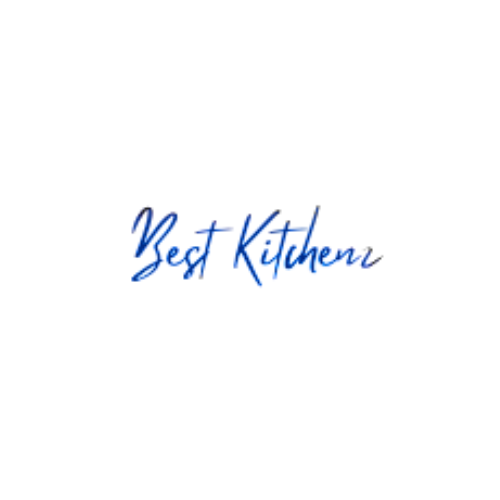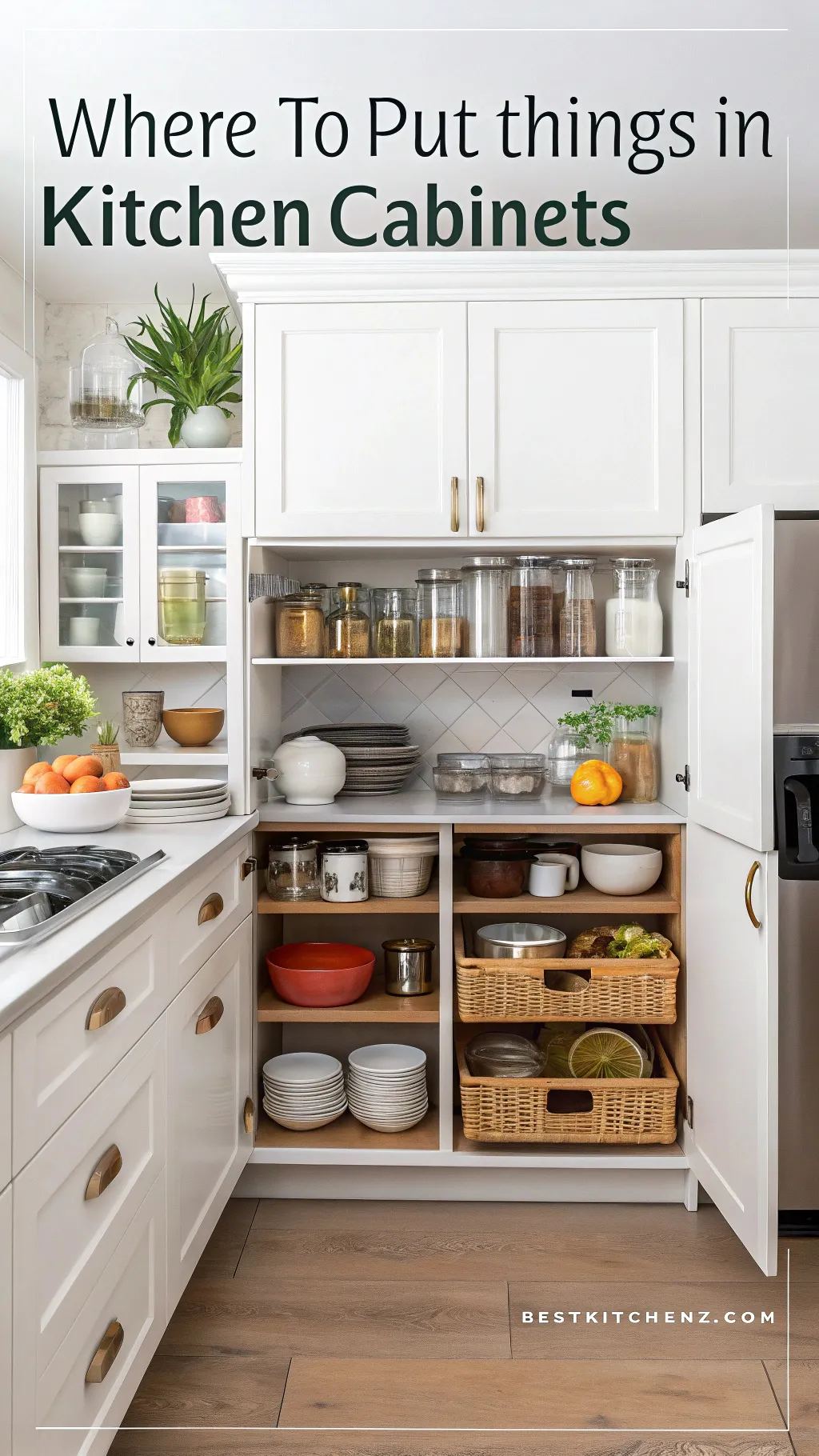Ever stood in front of your kitchen cabinets, door open, feeling a wave of mild panic because you can’t find the measuring cups?
Or maybe you’ve performed a precarious balancing act with Tupperware, only to have the entire stack avalanche onto your head the second you need the one container at the bottom.
Yeah, me too. I’ve had more conversations with my pots and pans than I care to admit, usually begging them to just cooperate.
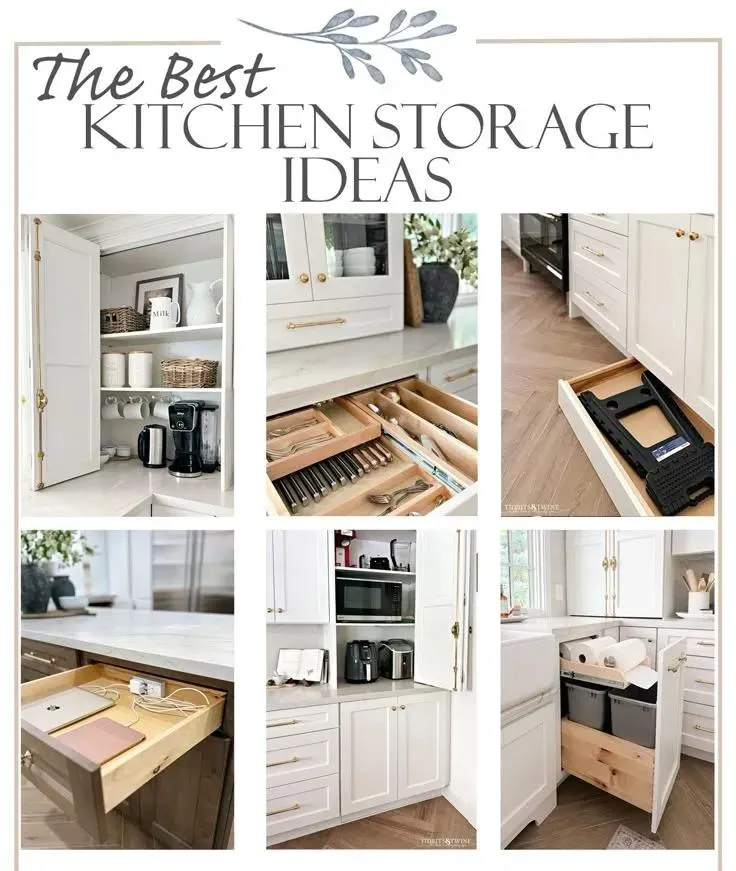
But here’s the secret: a well-organized kitchen isn’t about having a magazine-worthy pantry. It’s about creating a space that works for you, saving you precious minutes (and your sanity) during the morning rush or when you’re trying to get dinner on the table. It’s about knowing exactly where things live without having to think about it.
Think of this not as a rigid rulebook, but as a friendly chat from someone who’s been in the trenches. We’re going to talk about some simple, game-changing principles for where to put things in kitchen cabinets. Let’s turn that chaos into calm, one shelf at a time.
In This Article
The Golden Rule: Zones Are Your Best Friend
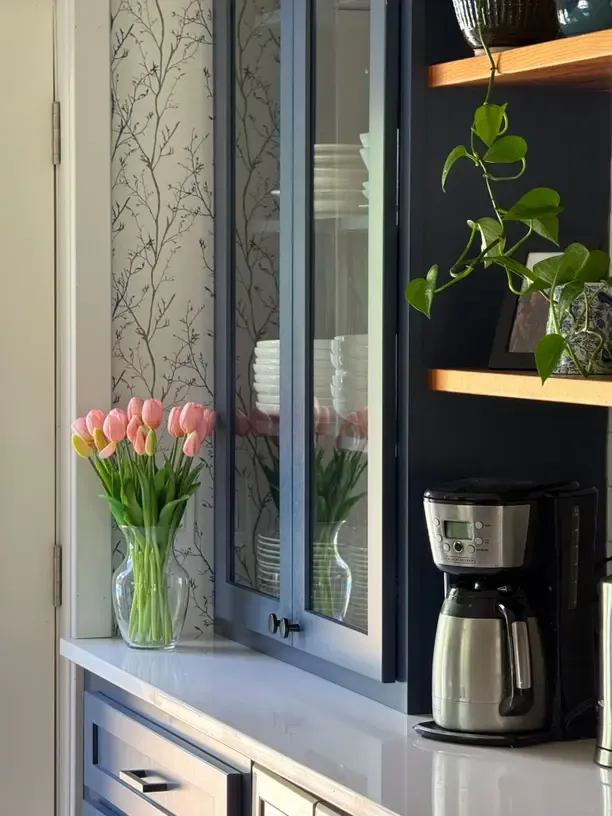
Before we start shoving things into drawers, we need to talk strategy. The single most important concept for an efficient kitchen is creating activity zones.
What’s a zone? It’s simply grouping items together based on what you do with them. Instead of thinking “where does this object go?”, ask yourself, “where do I use this object?”. This one mental shift changes everything.
Imagine making a cup of coffee. Wouldn’t it be lovely if the mugs, coffee, filters, and sugar were all within arm’s reach of the coffee maker? That’s a coffee zone. No more trekking across the kitchen half-awake.

Here are the key zones to consider:
- Coffee/Tea Station: Mugs, coffee, tea, sweeteners, filters.
- Baking Zone: Mixing bowls, measuring cups/spoons, baking sheets, flour, sugar.
- Cooking Zone: Pots, pans, spatulas, cooking oils, spices.
- Food Prep Zone: Cutting boards, knives, mixing bowls.
- Cleaning Zone: Dish soap, sponges, towels, trash bags.
Your kitchen’s layout will dictate your zones. The goal is to minimize your steps. Which, let’s be honest, is just good life advice in general.
The Prime Real Estate: Upper Cabinets
Upper cabinets are the most accessible storage for most people. This is your kitchen’s prime real estate, so you need to be strategic. Resist the urge to put your “good” china here if you only use it twice a year. This space is for your everyday essentials.
Check Next: How to Style Your Above Kitchen Cabinet Decor for Fall (The Right Way)
Eye-Level Shelves: The Daily Drivers
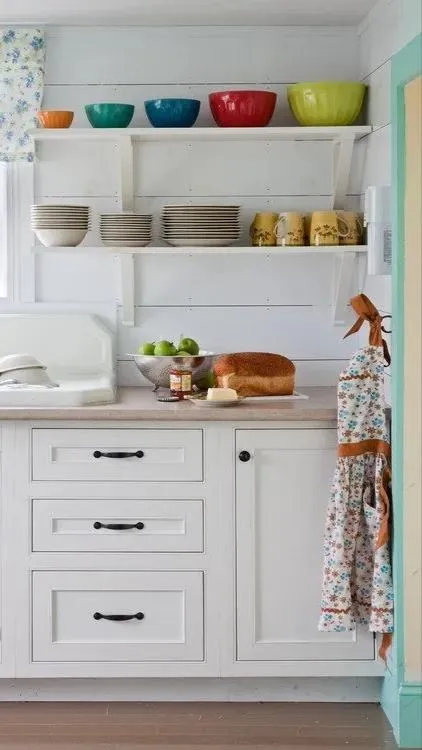
The shelves right at your eye level are the VIP section. This is where you put the things you use multiple times a day.
- Everyday Dishes: Plates, bowls, and glasses should live here. After loading the dishwasher, it’s a straight shot to put them away. No bending, no stretching.
- Most-Used Mugs: If you’re a caffeine fiend like me, your favorite mugs deserve this spot. I keep mine right above the coffee maker. It’s a beautiful, simple system.
- Commonly Used Ingredients: This could be spices, olive oil, vinegar, or pasta—whatever you grab constantly while cooking. Keeping these items visible prevents you from buying duplicates because you forgot you already had three jars of oregano.
Top Shelves: The “Sometimes” Stuff
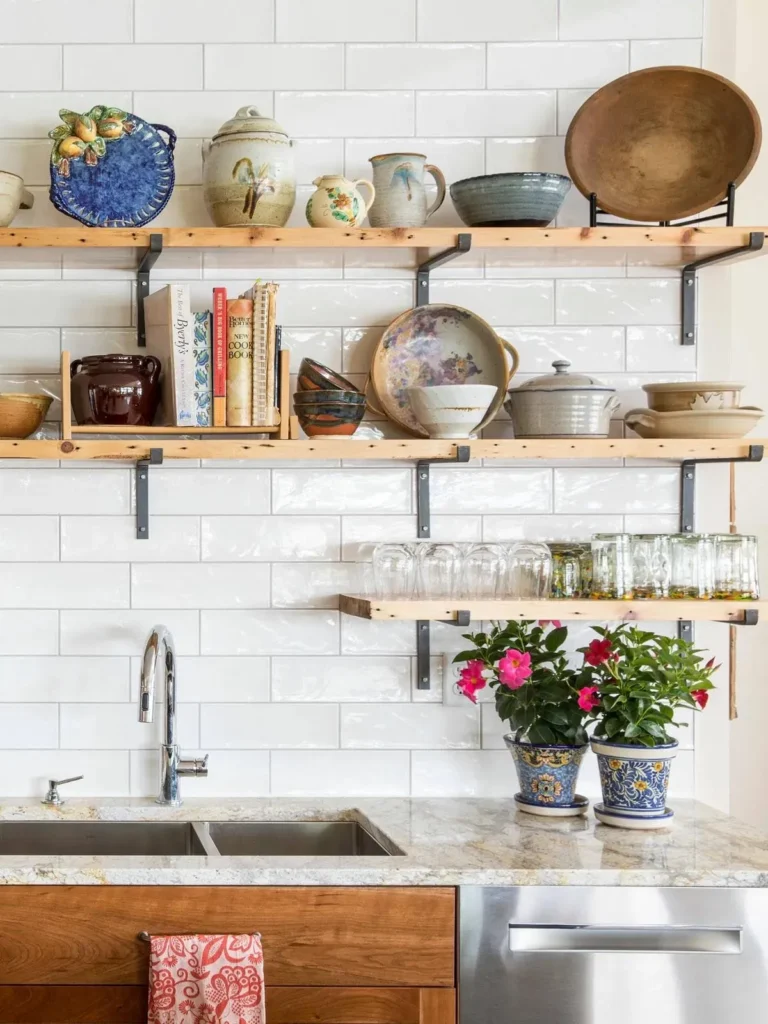
The highest shelves require a bit of a reach. This is the perfect home for items you use, but not every single day.
- Specialty Glasses: Wine glasses, cocktail glasses, or that fancy pitcher.
- Less-Frequently Used Appliances: Think blender, food processor, or stand mixer mixer if you’re not a weekly baker. Pro tip: If an appliance is heavy, consider a lower cabinet. Safety first!
- Reserve Pantry Items: Extra boxes of pasta, cans of beans, or bags of rice can go up here if your pantry is full.
The Deep Abyss: Lower Cabinets
Lower cabinets are like a cave—deep, dark, and things can get lost forever if you’re not careful. The key to conquering them is all about organization tools and being ruthless about what belongs down there.
Pots, Pans, and Bakeware
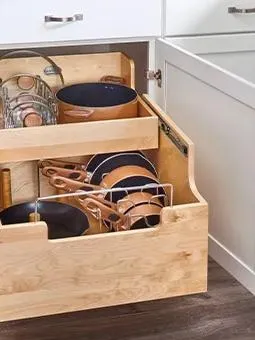
This is the classic use for lower cabinets, but just piling them inside is a recipe for frustration.
- Nesting is Your Friend: Nest pots and bowls with their lids to save space.
- Use Vertical Space: A simple pan rack or even a dish-drying rack turned on its side can let you store pans vertically. This is a total game-changer! Instead of digging through a stack, you can just slide one out.
- Lid Management: Ah, the eternal struggle. A lid organizer rack or a tension rod placed vertically in the cabinet can corral them. IMO, this small investment is worth its weight in gold.
The Pantry Overflow
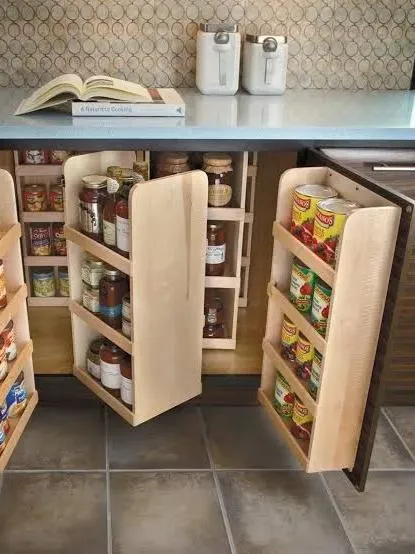
Not everyone has a walk-in pantry. Lower cabinets are great for storing bulkier food items.
- Heavy Items: This is the best place for bags of flour, sugar, potatoes, and onions. You don’t want heavy stuff up high where it’s dangerous to retrieve.
- Canned Goods: Use a can organizer that rolls forward. You load new cans in the back, and it automatically brings the oldest ones to the front. Genius, right? No more expired soup cans from 2015 lurking in the darkness.
The Hidden Gem: Drawer Organization
Drawers are the workhorses of the kitchen, but they can become a jumbled mess of utensils, tools, and who-knows-what in seconds. A little structure goes a long way.
Utensil Drawer: Tame the Chaos
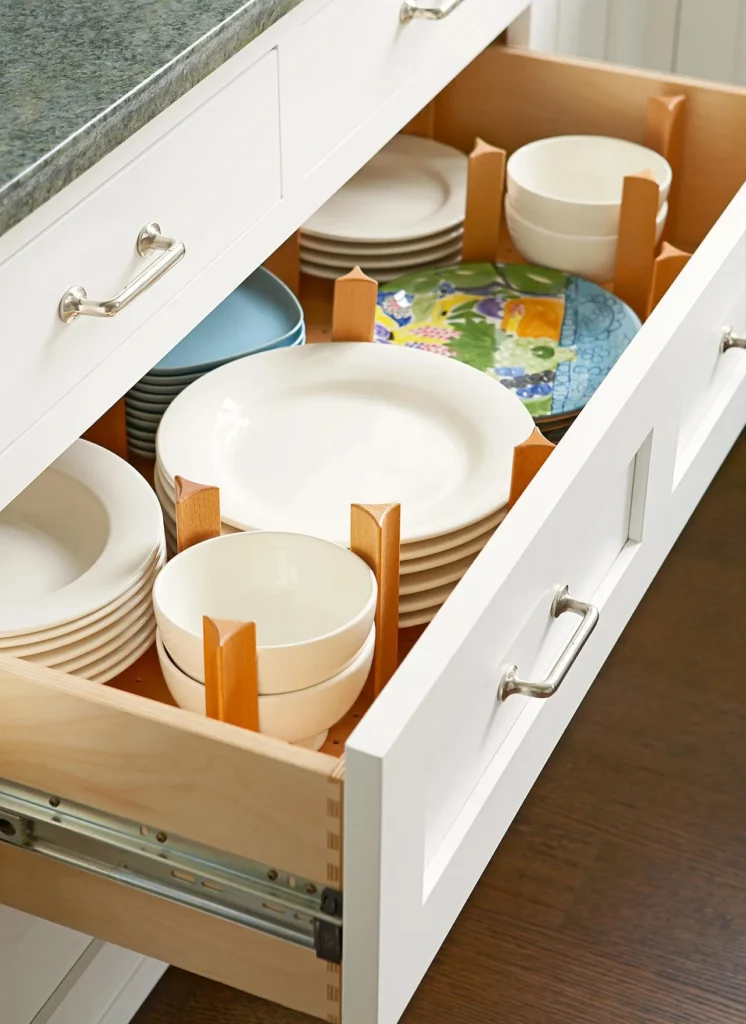
- Drawer Dividers are Non-Negotiable: Seriously. You wouldn’t just throw all your files into a filing cabinet without folders, right? Dividers create a designated spot for everything: spoons, spatulas, whisks, etc.
- Group by Function: Keep all your stirring utensils together, all your serving utensils together. It sounds simple, but it makes cooking so much more fluid.
- The “Junk” Drawer: Every home has one. But even it deserves a little respect. Use small containers to corral batteries, twist ties, and takeout menus. A little order in the chaos 🙂
The Knife Drawer: A Safe Bet
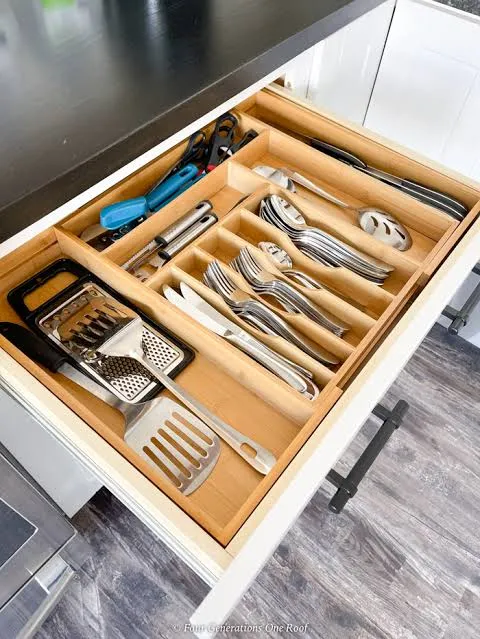
If you don’t have a countertop block, a drawer knife organizer is a must for safety and keeping your blades sharp. Never, ever just toss knives loosely into a drawer. (Unless you have a strange desire to play a very dangerous version of kitchen Jenga.)
The Often-Forgotten Spaces
A truly space-saving kitchen utilizes every nook and cranny. Let’s talk about the spots you might be ignoring.
The insides of Cabinet Doors
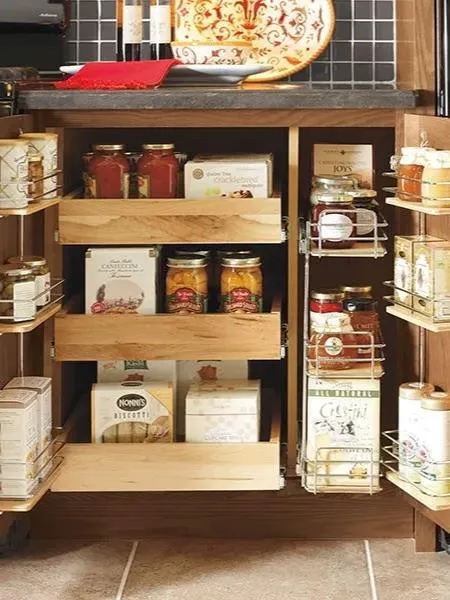
This is free real estate! Stick a rack on the inside of a door to hold:
- Pot lids (see? another solution!).
- Spice jars.
- Cleaning supplies under the sink.
- Measuring spoons and cups.
The Corner Cabinet (The Bermuda Triangle)
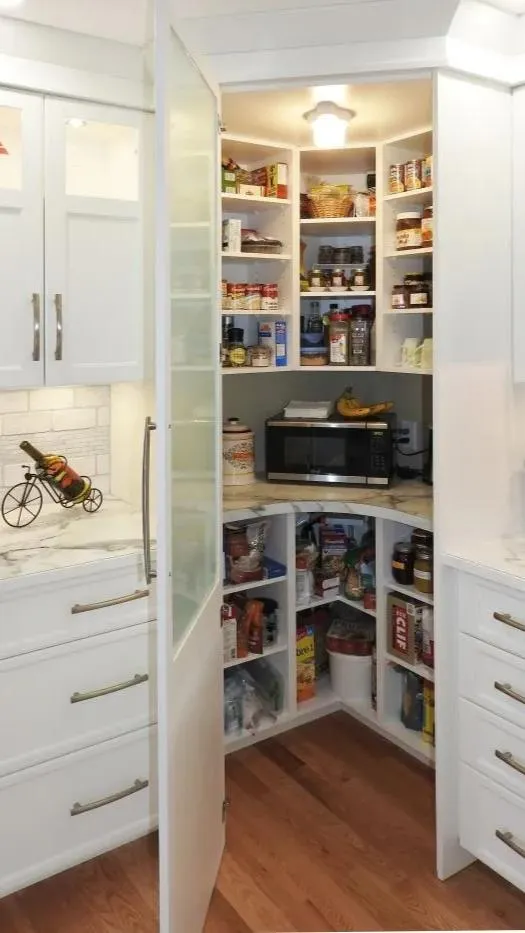
We’ve all lost a small appliance or Tupperware container in the corner cabinet. But you can reclaim it!
- Lazy Susans: A rotating turntable is the perfect solution. You can actually access things in the back without dislocating your shoulder.
- Pull-Out Shelves: These are a more permanent solution that makes the entire depth of the cabinet usable.
Above the Fridge
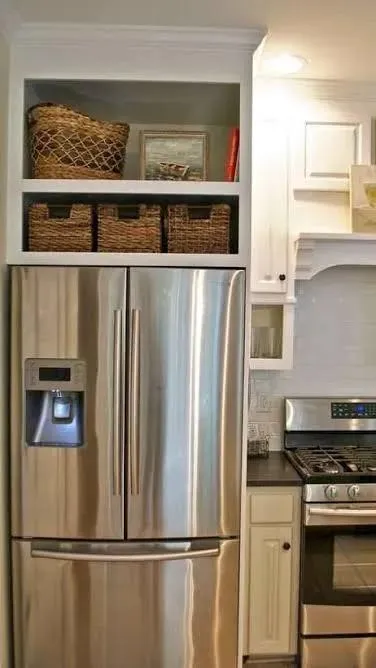
This spot is often a dust collector, but it’s perfect for items you need to store but rarely use.
- Serving platters for big holidays.
- Vases.
- That giant popcorn maker you swore you’d use every week. (It’s okay, we all have one.)
Putting It All Together: Your Action Plan
Feeling overwhelmed? Don’t be. You don’t have to reorganize your entire kitchen in a single weekend. In fact, I’d advise against it. That’s a fast track to burnout.
Here’s a simple, actionable plan:
- Empty One Cabinet at a Time. Just one. Take everything out.
- Sort Ruthlessly. Be honest. Do you use this? Does it have a lid? Does it spark joy? (Thanks, Marie Kondo). Create piles: Keep, Donate, Toss.
- Clean the Empty Cabinet. It’s so satisfying.
- Group Your “Keep” Items. Are they part of a zone? Do they belong in this specific cabinet based on how often you use them?
- Place Items Back Thoughtfully. Put the most frequently used items in the easiest-to-reach spots.
- Consider an Organizer. Would a divider, turntable, or rack make this space more efficient?
- Celebrate! You’ve conquered one cabinet. Admire your work. Have a coffee using the mug you can now easily find.
To Conclude…..
The goal isn’t perfection. It’s progress. A kitchen that saves you time and reduces your stress is a kitchen that gives you freedom. You’ll spend less time searching and more time doing what you actually love—whether that’s cooking a gourmet meal or just enjoying a few extra minutes of peace with your perfectly accessible cup of coffee. Now, go forth and organize! 🙂
